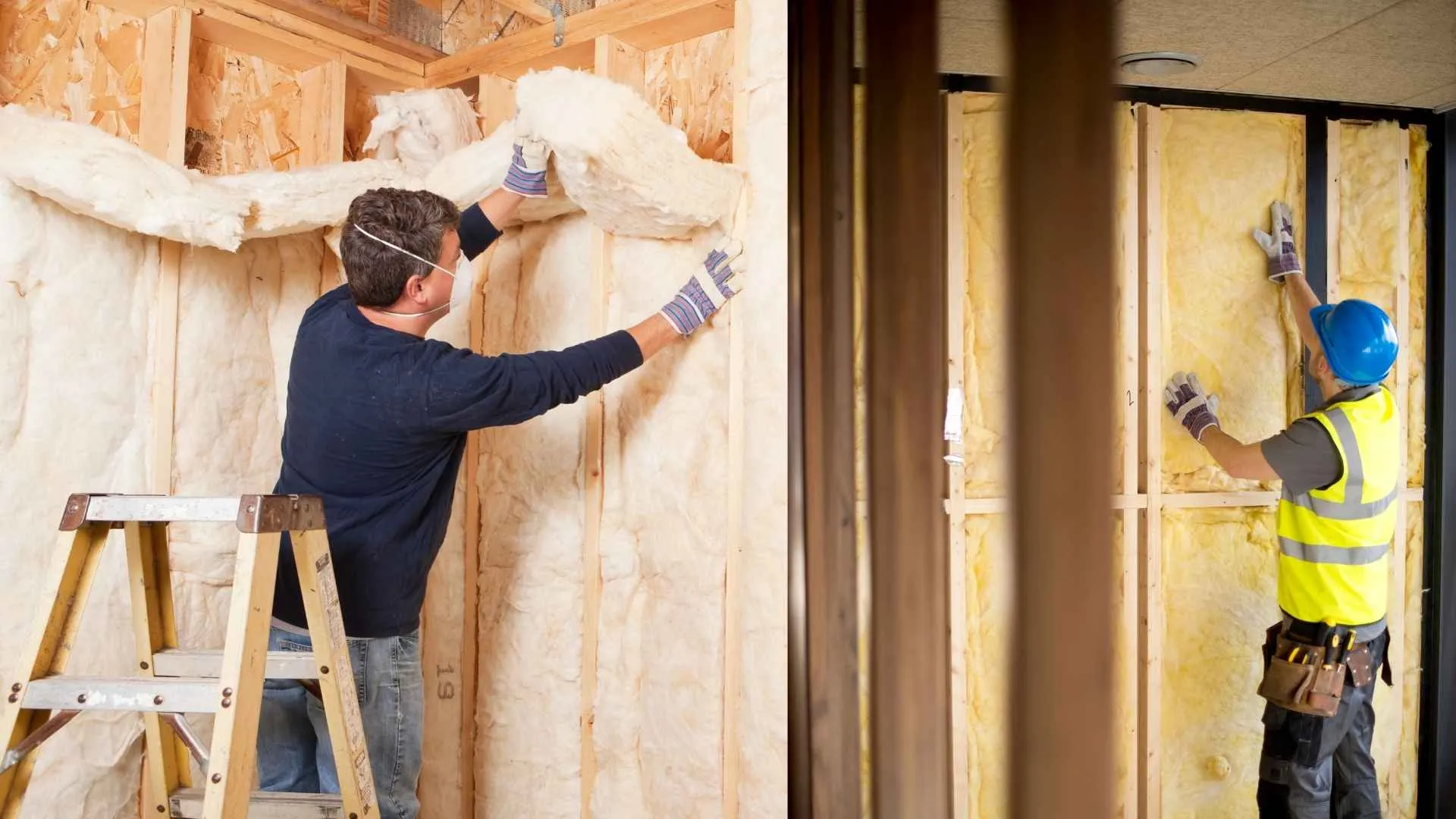
Home insulation acts as a barrier, preventing heat loss in winter and heat gain in summer, thus maintaining a comfortable indoor temperature year-round. It reduces the demand on heating and cooling systems, leading to lower energy consumption and costs. Effective insulation also helps prevent moisture build-up, which can protect your home from mould and structural damage. Beyond comfort and cost savings, proper insulation contributes to a reduced environmental footprint by lowering the energy required to maintain your home’s temperature.
Do You Need Insulation on Interior Walls?
While exterior wall insulation is a common priority, insulating interior walls can be beneficial under certain circumstances. It helps in maintaining consistent temperatures between rooms and can be particularly useful in homes with unused or less frequently occupied spaces, such as guest rooms or storage areas. This can prevent the transfer of heat or cold between conditioned and unconditioned spaces. Interior wall insulation is also effective in reducing noise transmission, making it ideal for rooms requiring soundproofing, like home offices or bedrooms.
Do You Need Insulation Between Floors?
Insulating between floors is especially beneficial in multi-story homes. It helps reduce noise transfer, making for a quieter living environment. This is particularly valuable in homes with wood floors, where footsteps and other sounds can carry between levels. Insulation between floors also aids in maintaining consistent temperatures, preventing heat loss through unheated spaces like garages or basements.
Targeting The Right Places In Your Home
Identifying key areas for insulation ensures maximum efficiency and comfort. Here are some of the primary locations to focus on:
Attic Insulation
The attic is one of the most critical areas to insulate since heat rises and can escape through the roof. Proper attic insulation can significantly reduce heating costs in winter and cooling costs in summer. It’s also essential for minimising temperature fluctuations and preventing moisture problems due to condensation.
Wall Insulation
Exterior walls are a key component of a home’s thermal envelope. Insulating them prevents heat loss during winter and keeps the heat out during summer, contributing to overall comfort and energy savings. For homes with shared walls or those adjacent to unconditioned spaces like garages, insulating these areas can improve indoor air quality and energy efficiency.
Ceiling Insulation
Ceiling insulation is crucial for maintaining indoor temperatures, especially in homes with high or vaulted ceilings. It helps to prevent heat from escaping through the roof in winter and keeps hot air out during the summer, thus aiding in a more comfortable home environment year-round.
Under Floor Insulation
Insulating floors is particularly important if they are above unheated spaces like crawl spaces or garages. It prevents heat loss, reduces cold drafts, and can help maintain a comfortable temperature throughout the home. Proper floor insulation also helps protect against moisture and improves overall energy efficiency.
Choosing The Right Insulation
Selecting the appropriate insulation involves considering the R-value, which measures thermal resistance, and the specific needs of your home. Different materials like fibreglass, cellulose, and spray foam have varying benefits in terms of performance, cost, and ease of installation. For example, fibreglass is affordable and effective, while spray foam offers superior air sealing but comes at a higher price.
Consult with a professional to determine the best insulation for each area of your home, based on climate, budget, and structural considerations.
The Importance Of Choosing The Right Areas For Insulation
Focusing on the most impactful areas for insulation, such as the attic, walls, and floors, is key to maximising energy efficiency. Improper or inadequate insulation in critical areas can lead to higher energy bills and discomfort due to uneven temperatures. By targeting these key zones, you ensure that your home stays comfortable throughout the year while reducing your carbon footprint.
